by Jon LeSage, editor and publisher, Green Auto Market
Here’s my take on the 10 most significant and interesting occurrences during the past week…….
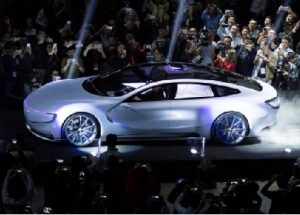 Highlights from Beijing Auto Show: Along with the downturn in the Chinese economy and the growing popularity of SUVs with car shoppers, plug-in electric vehicles have been providing a central theme at this year’s Beijing auto show. Government incentives for electric vehicles continue to be influential in automaker commitment to rolling out more electrified models; along with an understanding of the worsening of air pollution in China’s fast-developing cities. Faraday Future’s investor LeEco (formerly called LeTV, or China’s Netflix, and led by billionaire founder Jia Yueting) unveiled the LeSEE concept car. While the Batmobile-like Faraday FFZERO1 turned heads at the CES show in Las Vegas earlier this year, LeEco appears to be more of a Model S-like electric luxury car than a high-performance supercar. LeEco CEO Yueting touted the car’s user-friendly features including memory foam seats, automatic driving mode and a steering wheel that folds toward the dash when the car is in autopilot mode to give the driver more space. It’s a sleek four-door sedan with suicide doors. Volkswagen is attempting to distance itself from the diesel car reporting scandal with the T-Prime Concept GTE, a plug-in SUV that may become the next Touareg. The T-Prime is powered by a 375-horsepower that combined battery and 2-liter engine; it will go 34 miles on electricity alone before the gas engine kicks in. Plug-in hybrid Corollas will be the first stepping stone for Toyota to meet stringent emissions standards and to receive incentives for doing so in China, according to Toyota executive Hiroji Onishi. Toyota plans to launch plug-in hybrid versions of the Toyota Corolla and Levin in China in 2018; the Levin is built on the same platform as the Corolla. Ford will start its green car rollout in China with the launch of the hybrid version of the Mondeo later this year. The next step will be the C-Max Energi plug-in hybrid arriving in early 2017. Ford will be bringing to the Chinese market vehicles with a downsized turbocharged engine, a traditional hybrid powertrain, a plug-in hybrid setup, and eventually an all-electric variant, to meet strict emissions standards tightening up over the next five years, the company said. Chinese carmakers showed off a list of concept electric vehicles at the show (and some that have been in production for a few years), including offerings from BAIC, Beijing Auto, BYD, Chery, FAW, Jianghuai Motor Co., and SAIC.
Highlights from Beijing Auto Show: Along with the downturn in the Chinese economy and the growing popularity of SUVs with car shoppers, plug-in electric vehicles have been providing a central theme at this year’s Beijing auto show. Government incentives for electric vehicles continue to be influential in automaker commitment to rolling out more electrified models; along with an understanding of the worsening of air pollution in China’s fast-developing cities. Faraday Future’s investor LeEco (formerly called LeTV, or China’s Netflix, and led by billionaire founder Jia Yueting) unveiled the LeSEE concept car. While the Batmobile-like Faraday FFZERO1 turned heads at the CES show in Las Vegas earlier this year, LeEco appears to be more of a Model S-like electric luxury car than a high-performance supercar. LeEco CEO Yueting touted the car’s user-friendly features including memory foam seats, automatic driving mode and a steering wheel that folds toward the dash when the car is in autopilot mode to give the driver more space. It’s a sleek four-door sedan with suicide doors. Volkswagen is attempting to distance itself from the diesel car reporting scandal with the T-Prime Concept GTE, a plug-in SUV that may become the next Touareg. The T-Prime is powered by a 375-horsepower that combined battery and 2-liter engine; it will go 34 miles on electricity alone before the gas engine kicks in. Plug-in hybrid Corollas will be the first stepping stone for Toyota to meet stringent emissions standards and to receive incentives for doing so in China, according to Toyota executive Hiroji Onishi. Toyota plans to launch plug-in hybrid versions of the Toyota Corolla and Levin in China in 2018; the Levin is built on the same platform as the Corolla. Ford will start its green car rollout in China with the launch of the hybrid version of the Mondeo later this year. The next step will be the C-Max Energi plug-in hybrid arriving in early 2017. Ford will be bringing to the Chinese market vehicles with a downsized turbocharged engine, a traditional hybrid powertrain, a plug-in hybrid setup, and eventually an all-electric variant, to meet strict emissions standards tightening up over the next five years, the company said. Chinese carmakers showed off a list of concept electric vehicles at the show (and some that have been in production for a few years), including offerings from BAIC, Beijing Auto, BYD, Chery, FAW, Jianghuai Motor Co., and SAIC.- Karma Automotive continues to change its name in its post-Fisker Automotive identity, with Chinese auto parts giant Wanxiang Group as its owner. Its plug-in hybrid sports car is now called the Revero, and will go on sale later this year. The new name is a combination of the Latin “re” and “vero,” which the company says translates to “truth,” the company says. The company declined to divulge the price range for the new vehicle or provide a delivery date. Karma plans to formally unveil this summer with a new battery and charger and electrical controls.
- Ridesharing giants Uber and Lyft settled legal and regulatory battles last week. Uber will pay up to $100 million to drivers who had sought to be classified as employees in California and Massachusetts. That settled two lawsuits that posed a threat to the company’s on-demand business model, which relies on independent contractors. Drivers will continue to be considered independent contractors and not employees. The settlement brings to a close what employment experts believe was the biggest existential threat to the fast-growing start-up. In the ruling, Uber is being required to institute several changes in the way it disciplines drivers. The company will no longer be able to deactivate drivers’ accounts at will. Drivers will now receive warnings and have an opportunity to correct any issues before they are cut from the service. Uber will also make it clear to riders that tips are not included in Uber’s fares. Drivers will be permitted to solicit tips from passengers – a policy that competitor Lyft has long offered. The carpooling decision and specific guidelines to Uber still need to be approved by Judge Edward Chen of the District Court of Northern California, which should take several months to finalize. Uber and Lyft will need to wait for California regulators to rule on another issue: whether they’ll be permitted to offer short-term car rental programs to their drivers. Lyft has been working with its major investor, General Motors, on a program in Chicago where Lyft drivers can lease Chevrolets for up to eight weeks as part of the Express Drive program. California regulators are mulling over whether to block it from some of the country’s biggest car-booking markets in that state. Regulators are concerned that short-term leases enable Uber and Lyft’s fleet to act as taxi drivers without being subject to the same rules. Another legal issue still being pondered is whether Uber and Lyft will be required to have fingerprint background checks on its drivers, which other ground transportation service providers are required to carry out. Lyft does have to adopt practices already in place with Uber; its drivers will need to have annual inspections of their vehicles conducted by certified vendors. Uber and Lyft did have a victory in the California rulings by the California Public Utilities Commission. State regulators on Thursday granted companies such as Uber and Lyft permission to offer carpooling, sanctioning a service that has allowed fast-growing San Francisco companies to offer lower-cost rides. These services are called “ridesharing” by these ride-hailing companies and operate under the brands UberPool and Lyft Lanes.
- 5 mpg standard: Automakers are doing more than ever before to meet national fuel efficiency standards, with 56 percent of available vehicle models matching or exceeding today’s targets, according analysis of vehicle data by the Consumer Federation of America (CFA). “Fuel efficiency increasingly comes standard with new cars, trucks, and SUVs” said Jack Gillis, Director of Public Affairs for CFA. Model year 2016 is the third in a row in which more than half of all passenger car and truck models offered for sale in the United States meet or beat the national standards, according to the CFA.
- Honda Clarity and Accord Hybrid: Honda had a few major announcement last week in its green vehicle offerings. The Honda Clarity Fuel Cell vehicle went on sale in Japan last month and will be offered in the U.S. late this year with a range of 300 miles and a refueling time of three-to-five minutes. The Clarity Fuel Cell will be followed by an all-electric Clarity next year that will launch in California and other states still to be determined. By the end of 2017, Honda will add the Clarity Plug-in Hybrid that can go 40 miles before the extended range kicks in. Honda also gave details on the new 2017 Accord Hybrid. Honda expects to double sales of 2017 Accord Hybrid when it goes on sale this spring. The new Accord Hybrid is expected to get 49 miles per gallon in the city and 47 mpg on the highway for a combined 48 miles per gallon under new, more stringent U.S. EPA tests.
- Vehicle Technologies program funding: The U.S. Senate voted Wednesday to reauthorize a $1.6 billion for the U.S. Dept. of Energy’s Vehicle Technologies program, which is intended bolster development of hybrid and electric vehicles. The Senate energy bill calls for spending about $339 million per year “to support domestic research, development, engineering, demonstration and commercial application and manufacturing of advanced vehicles, engines and components. The approval came despite objections of conservative groups that have complained about past government loans to auto companies — including Fisker Automotive — that have gone bankrupt.
- ZEV bus funding: The Federal Transit Administration (FTA) announced that it will provide $22.5 million in funding for seven different transit properties to purchase 51 zero emission buses. The FTA also announced that an additional solicitation is now on the street that would provide a total of $55 million for the purchase of additional low and no emission buses. “The FTA is providing catalytic investment that will help spur the growth of the zero emission bus market. It’s very possible that as a direct result of this FTA program by 2020 ten percent of all new transit buses sold will be emission free,” said CALSTART President and CEO John Boesel.
- Nissan takes on Model 3 in ad: A new Nissan Leaf ad campaign is poking fun at how long it will take for the Tesla Model 3 to end up in owners’ garages starting in late 2017. ““Why wait when you can drive an all-electric Leaf now?” Nissan asks in the ads. “And why drop $1,000 to stand in line when you can get $4,000 cash back and best-in-class range?” The ads remind consumers that Nissan has been mass-producing the Leaf since 2010.
- Volvo wants to sell one million electrified vehicles by 2025 with “at least two” hybrid versions of every model, as well as an all-electric car. The latter will come in 2019. Volvo’s CEO Hakan Samuelsson is aware that the million electrified cars sold by 2025 are an aspiring target, but he explained that it is “deliberately ambitious.” So far, Volvo has only released the C30 battery electric vehicle.
- Hydrogen fuel cell buses: New Flyer of America has completed a demonstration of the Xcelsior XHE60 heavy-duty articulated hydrogen fuel cell transit bus. Representatives from Alameda County Transit (AC Transit) of California and the Metro Transit of Minneapolis – were on hand to participate in the vehicle’s debut and demonstration. Based on the Xcelsior X60 heavy-duty transit bus platform, New Flyer partnered with Ballard Power Systems Inc. and Siemens to develop the hydrogen fuel cell propulsion system.


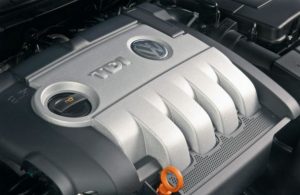 The Volkswagen diesel car emissions reporting scandal has triggered a wave of regulatory pressure in the U.S., Europe, and Asia. It’s going way beyond the VW brands, as Mitsubishi faces pressure on honest mpg fuel economy reporting that harkens back to Hyundai, Kia, and Ford in 2012-14. Mercedes-Benz is now facing diesel exhaust emissions reporting pressure in the U.S. and Europe.
The Volkswagen diesel car emissions reporting scandal has triggered a wave of regulatory pressure in the U.S., Europe, and Asia. It’s going way beyond the VW brands, as Mitsubishi faces pressure on honest mpg fuel economy reporting that harkens back to Hyundai, Kia, and Ford in 2012-14. Mercedes-Benz is now facing diesel exhaust emissions reporting pressure in the U.S. and Europe.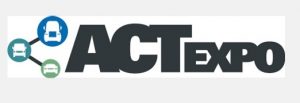 Corporate sustainability day at ACT Expo: Corporate sustainability will be the leading issue on Thursday, May 5, Advanced Clean Transportation (ACT) Expo in Long Beach, Calif. Corporations and government agencies are looking at their fleet operations more closely as air quality regulations become increasingly stringent and global fuel costs remain volatile. Transportation is the fastest growing source of carbon dioxide and causes approximately 60% to 70% of greenhouse gas emissions for most mid-size cities. Executives from Walmart, Coca-Cola, Penske, Unilever, SoCalGas, ZipCar, and more will share insight on how your organization can: reduce its carbon footprint; proactively address continually tightening emissions regulations; gain a competitive business advantage; and mitigate the impact of volatile petroleum prices. Panel topics will include fleet operators that have gone beyond basic compliance to prove that sustainability can make both sense and cents for their fleets; creating a sustainable freight transportation action plan; and, how companies like Uber, Lyft, ZipCar, Amazon, InstaCart, and Google have completely disrupted the urban mobility landscape. To participate,
Corporate sustainability day at ACT Expo: Corporate sustainability will be the leading issue on Thursday, May 5, Advanced Clean Transportation (ACT) Expo in Long Beach, Calif. Corporations and government agencies are looking at their fleet operations more closely as air quality regulations become increasingly stringent and global fuel costs remain volatile. Transportation is the fastest growing source of carbon dioxide and causes approximately 60% to 70% of greenhouse gas emissions for most mid-size cities. Executives from Walmart, Coca-Cola, Penske, Unilever, SoCalGas, ZipCar, and more will share insight on how your organization can: reduce its carbon footprint; proactively address continually tightening emissions regulations; gain a competitive business advantage; and mitigate the impact of volatile petroleum prices. Panel topics will include fleet operators that have gone beyond basic compliance to prove that sustainability can make both sense and cents for their fleets; creating a sustainable freight transportation action plan; and, how companies like Uber, Lyft, ZipCar, Amazon, InstaCart, and Google have completely disrupted the urban mobility landscape. To participate, 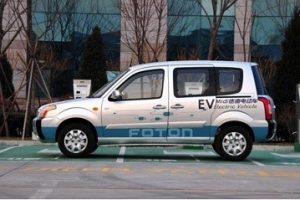 How China has become the largest plug-in electric vehicle market in the world; and how Chinese investors have put millions of dollars into U.S. companies with electric drive technology.
How China has become the largest plug-in electric vehicle market in the world; and how Chinese investors have put millions of dollars into U.S. companies with electric drive technology.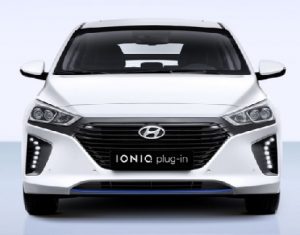 Hyundai Motor Company has been surging forward in the global auto market, and plans to become No. 2 in green car sales after Toyota by 2020. Hyundai unveiled its signature brand last month at the New York Auto Show – the Ioniq – which will be the auto industry’s first-ever model available in hybrid, plug-in hybrid, and battery-electric iterations and built on the same drivetrain. It will be rolling out later this year. Within the next four years, the Korean automaker intends to flood the market with 26 green vehicles, including hybrid, plug-in hybrid, all-electric, and hydrogen-powered models.
Hyundai Motor Company has been surging forward in the global auto market, and plans to become No. 2 in green car sales after Toyota by 2020. Hyundai unveiled its signature brand last month at the New York Auto Show – the Ioniq – which will be the auto industry’s first-ever model available in hybrid, plug-in hybrid, and battery-electric iterations and built on the same drivetrain. It will be rolling out later this year. Within the next four years, the Korean automaker intends to flood the market with 26 green vehicles, including hybrid, plug-in hybrid, all-electric, and hydrogen-powered models.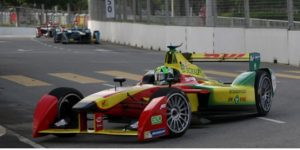 1. Formula E series: Lucas di Grassi drove his Abt Schaeffler Audi Sport electric racer for a perfect score to win the
1. Formula E series: Lucas di Grassi drove his Abt Schaeffler Audi Sport electric racer for a perfect score to win the 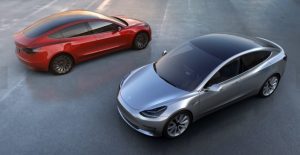 Tesla Motors marked a moment in plug-in electric vehicle history on Thursday night by unveiling what could become the first affordable electric car hitting mass-market sales; and getting hundreds of thousands of people to put money down on a car that won’t be coming out any time soon.
Tesla Motors marked a moment in plug-in electric vehicle history on Thursday night by unveiling what could become the first affordable electric car hitting mass-market sales; and getting hundreds of thousands of people to put money down on a car that won’t be coming out any time soon.